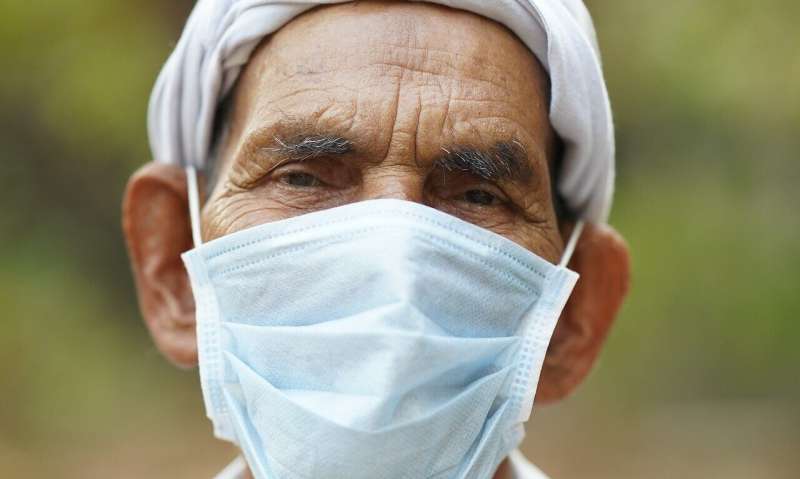
In an unusual sight on Tuesday, customers buying cheese, fruit and bread at London’s historic open-air Borough Market were all wearing masks.
Located near London Bridge and popular with both locals and tourists, the market this week became the first outdoor public place in the UK to insist on face coverings.
Masks remain optional elsewhere, despite the swift spread of a new virus strain that scientists say is up to 70 percent more contagious.
As the numbers of deaths have soared to the highest in Europe, Britain has stopped short of tightening the rule.
Meanwhile a number of countries—France, Italy, Poland and South Africa among them—have made masks mandatory or mostly mandatory in busy public spaces outside.
For a long period during the country’s first lockdown, UK officials dissuaded people from wearing masks and public acceptance was low.
Some people are still reluctant to wear them even in places where it is compulsory, such as in shops or on public transport.
Police are now threatening tougher penalties and major supermarket chains have announced security guards will stop shoppers entering without masks.
Borough Market was able to make masks obligatory by updating regulations that date back to the Victorian era.
Both stall holders and customers must wear face coverings or face a fine of £50 ($68, 56 euros).
“We’ve done everything we can to ensure that the market is as safe as possible,” said Kate Howell, the market’s director of development, criticising what she said was the government’s “less than clear guidance.”
The handful of customers willingly complied as they wandered around stalls selling fresh venison, seafood or pastries.
One shopper, Patrick, a man in his 50s, said he was sceptical about the benefits of wearing masks but would go along with it to save the market.
“I think that it’s very important that our market survives because it brings in food that you can’t buy in supermarkets,” he said after stocking up on Langres, a semi-soft French cheese.
Reassure customers
Graham Teale, the owner of The Turkish Deli stand under the tracks of London Bridge station, said he has been wearing a mask since February and hoped that making them compulsory will ease the fears of customers looking for olives and hummus.
In the run-up to Christmas, “it was quite busy with people stood in the street, eating street food and drinking alcohol in large groups.
“A lot of our customers felt very uncomfortable with that and didn’t come,” he said.
The government is not currently backing a change to rules on mask-wearing outside.
Chris Whitty, England’s chief medical officer, nevertheless conceded at a briefing on Monday that there was a risk if people gathered in large numbers outside, giving the example of a market stall.
“In that situation, there might be some logic to people thinking about wearing masks,” he said.
The main official message remains to limit the number of interactions with others as the UK is seeing some 50,000 new confirmed infections every day.
Government minister Kit Malthouse told Sky News on Tuesday that “a small minority of people are flouting the rules and they are costing people their lives.”
The minister, whose brief includes crime and policing, said the government would decide whether to enforce mask-wearing outside depending on the numbers.
Divided opinion
Scientists are divided on how much difference wearing masks in public spaces makes.
“We do know that the risk of transmission out of doors is substantially less than indoors,” said Paul Hunter, professor of medicine at the University of East Anglia.
Masks “are no replacement for proper social distancing” and also become ineffective when wet, he said.
But Julian Tang, an honorary associate professor at the University of Leicester and clinical virologist, said masks have a role to play, however, particularly in winter.
“Colder outdoor air with less sunlight will help this lipid-enveloped coronavirus survive in aerosols,” he said.
He compared these tiny droplets hanging in the air to cigarette smoke.
“If you are standing in a queue for the bus, and someone is smoking—even if you are standing more than two metres away, if you are downstream of that smoke—you can still smell it.”
Source: Read Full Article
